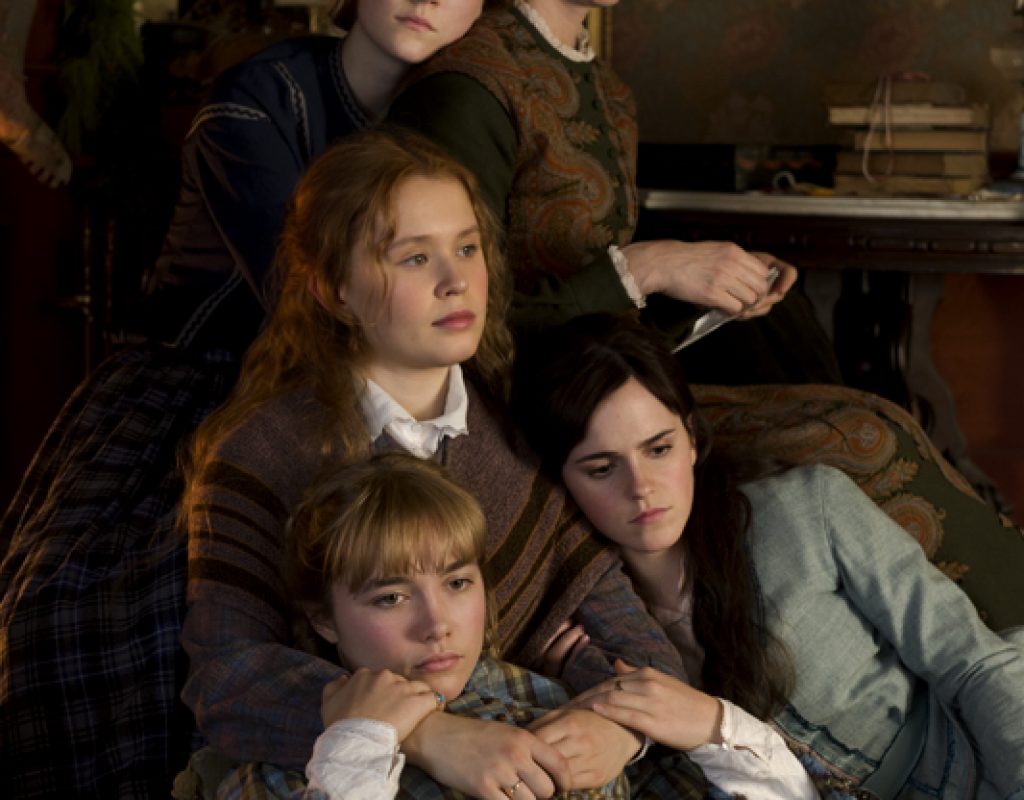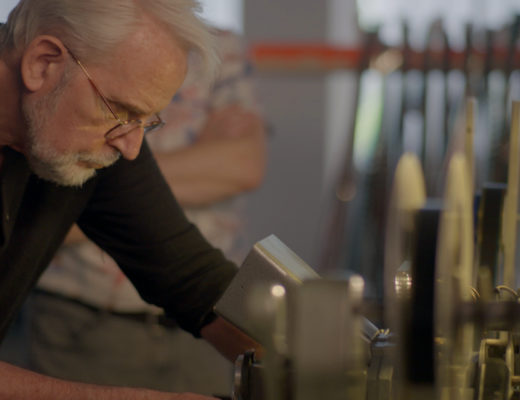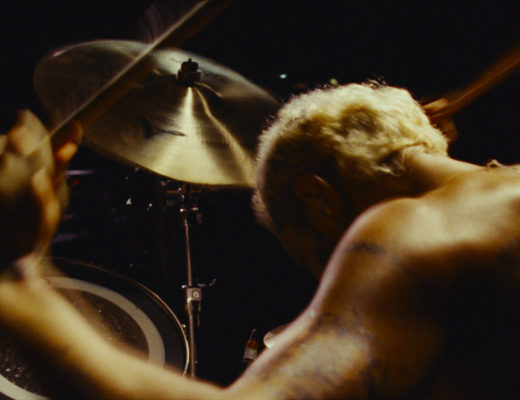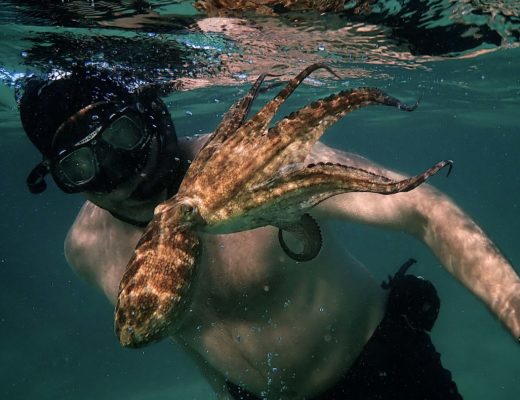Nick Houy, ACE won a Primetime Emmy for his work on HBO’s The Night Of. He was also nominated for an ACE Eddie for his work on Greta Gerwig’s previous film, Lady Bird and for an Independent Spirit Award for his editing of the feature film Mid-90s. He’s also cut episodes of the TV series, Billions.
Today we discuss his continuing collaboration with director Greta Gerwig’s Little Women, which was just nominated for a 2020 Best Picture Oscar.
This interview – and others in this series – is also available as a podcast.
(This interview was transcribed with SpeedScriber. Thanks to Martin Baker at Digital Heaven)
HULLFISH: I just got out of a screening of Little Women and it is spectacular. What a pleasure to watch.
HOUY: Thank you. I appreciate it.
HULLFISH: It must be wonderful working with Greta. She seemed like she was in complete command of that movie.
HOUY: Absolutely. I think she’d been thinking about it since before she even understood consciousness. It was a part of her. She was almost confusing the memories she had from the book of her own childhood, the way that you are with things that form you at a young age.
HULLFISH: There’s such an interesting structure and use of time. The movie jumps forward and backward in time. Can you talk to me a little bit about working on a film that’s like that?
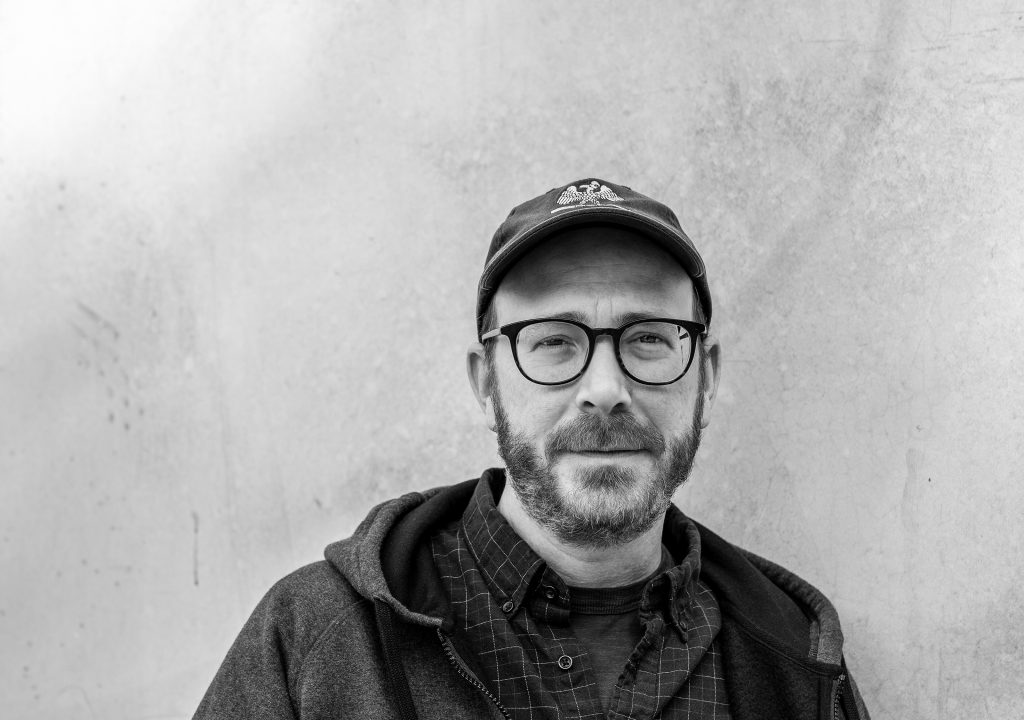
HOUY: It was always originally meant to be that way. What intrigued me about it when I read the script — obviously, I thought it was brilliant — and also took some courage to do it because if it doesn’t work, you’re in real trouble down the road. You can’t just chop it up and put it in chronological order and say, “that’s a wrap.” It just doesn’t work that way.
What Greta was able to do with the script, which I thought was amazing, was every transition from scene to scene was done through emotion rather than through chronology. And I always feel like with editing — what you’re trying to do — is through every scene link it by emotion and by what the interior lives of the characters are feeling. What she did is ingrain that into the script itself, which I think is what editing is trying to do already — link things by emotion. And so it just felt like the most perfect editing job you could imagine.
HULLFISH: So it sounds like maybe there weren’t a lot of changes from the script as far as structure were concerned?
HOUY: We did do a lot, but the main idea of it and linking was always there. 80 percent of what was done was intended to be done as far as jumping back and forth. And when we had to move things around or take a scene out or something, we really had to rewrite the end of a scene or the beginning of the scene so that it would link emotionally and visually.
HULLFISH: There’s this one section where Beth — one of the sisters — is playing the piano and there’s this nice montage of shots of the house before you see her playing, giving the audience just a sense of place. And there’s a pre lap of applause and some offscreen dialog into a play that Jo’s watching. Time and place just seemed to transition effortlessly. And I suppose that’s because of those emotional connections between jumps.

HOUY: It’s funny that you say it that way because that whole section we completely built. That was not scripted that way. But that particular cut that you’re talking about, where Beth is alone in the house playing by herself, and you hear Marmee offscreen yelling, “Beth, Beth.” And then it goes into the play where Jo is in New York. Those are actually both in the present. Everything’s in the present up until it goes to the hair burning scene where it says “seven years earlier.” And then we start jumping back and forth without any benchmarks.
HULLFISH: Sorry, I didn’t realize that the time frame was the same, but it’s definitely a huge jump in location.
HOUY: That’s the thing is you’re jumping in location and you’re jumping in time. And that always has confused audiences. We just had to know that — without putting a graphic on every single shot saying where and when we are — we just had to trust that the emotion of the story is what you cared about most, and as long as you are fully engaged in that and you’re not thinking about where exactly and when exactly you are. That’s a win for us. And it’s been working. There’s always like 1 percent of people who have a problem with it in the beginning of the movie, but by the end, they’re sold and that’s fine. It’s just built into what the movie is. You have to learn how to watch it a bit. And we actually like that about it. It forces you to lean in and really pay attention, and I think it actually hooks you in a way that you’re not expecting, which is really cool, and by the middle to the end, you’re deeply, deeply invested in ways that I’ve never seen in another movie.
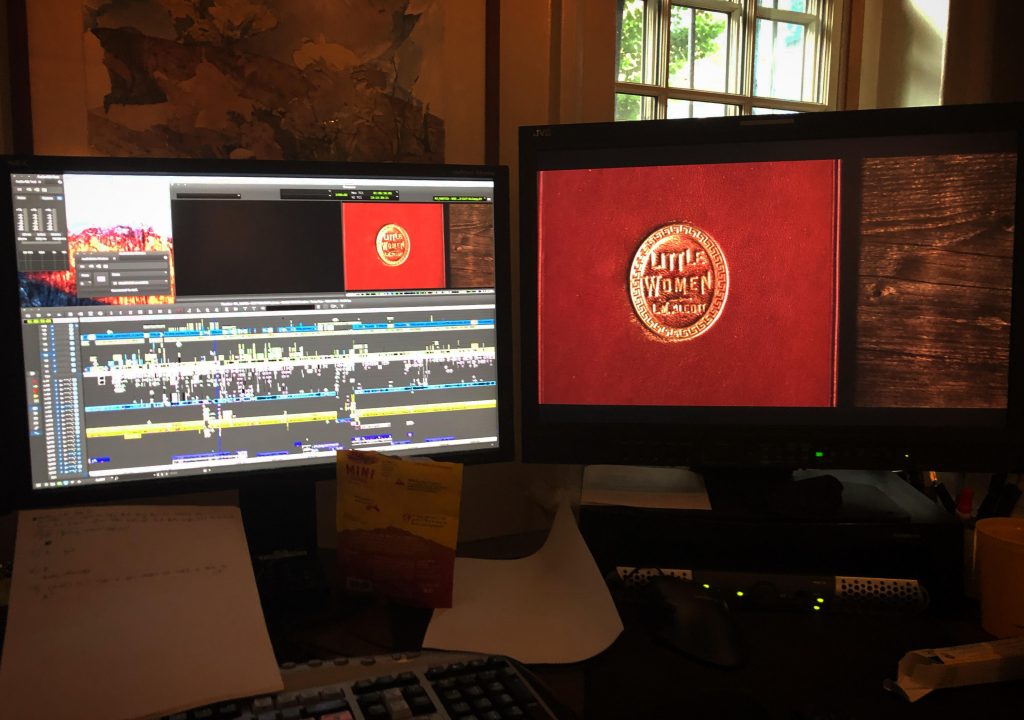 HULLFISH: I’m so glad that you didn’t use those onscreen graphics to show time and locations, but probably there was a lot of pressure from the studio to do it, right?
HULLFISH: I’m so glad that you didn’t use those onscreen graphics to show time and locations, but probably there was a lot of pressure from the studio to do it, right?
HOUY: Right. A lot of pressure to do that. We just do it once to show the difference from the beginning. And then as the movie goes on, they actually get closer and closer in time until they intersect.
I’m surprised no one on the Internet has done this yet, where they really show the timeline intersect in some visual manner because we had our scene cards doing it and we were talking about it all the time. And it’s a really interesting way of putting together the story that’s so well known. And even if you’re not familiar with it, I think at first you’re like, who are these people and where are they and what’s going on? But by the right amount of time, I think in the end of the second reel or so, you’re really engaged, despite whether you know Beth, Jo, Amy, and Meg.
HULLFISH: Tell me about the scene card. So you guys did use scene cards?
HOUY: Yeah. Usually, I don’t find it terribly helpful — just because we know the movie so well and we can just talk about it and quickly just try the things we’re talking about — but with a movie like this, where there was so much you could do with it. I wouldn’t say it was non-linear, but there were two timelines in linear order cutting back and forth. So that gives you a lot of flexibility of where you can move things around. And so we really did have to explore all those things. And we did move a lot of things around and take things out, which made you have to emotionally link them from scene to scene, which was really fun. It was a great challenge.

HULLFISH: So if she’s written the screenplay — obviously, as she did with the emotional links between time jumps — then you take out one of those time jumps, then what do you do?
HOUY: Absolutely. I was listening to your amazing interview about Once Upon a Time in Hollywood and how that’s jumping between the three characters, and I loved what Fred Raskin was saying about doing longer chunks with each of them rather than being modular as much and jumping back and forth.
We felt the same way. The script was much more modular — where we were jumping back and forth a lot — and we ended up creating larger chunks of time where we were jumping between and in doing so, because we had to link them — every scene transition is linked emotionally in the entire movie, so we had to build that when we were cheating it or jumping.
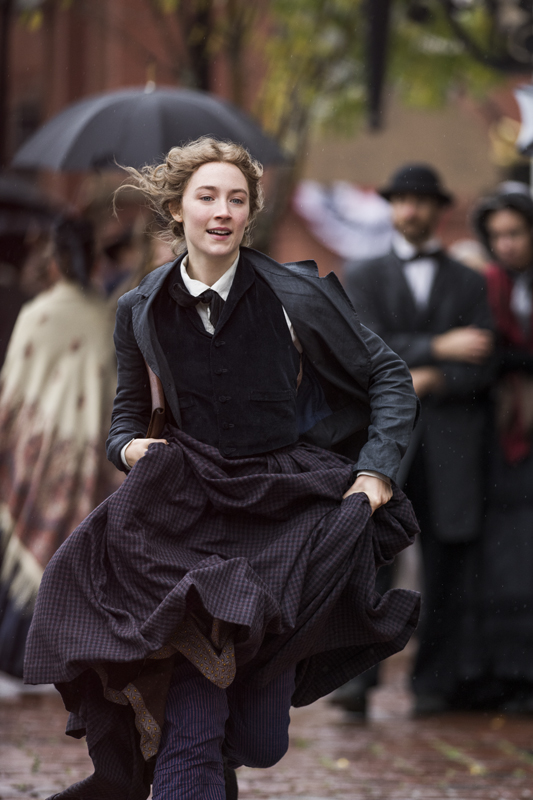
HULLFISH: Another thing I noticed is that there is such a nice sense of slow-paced scenes intermixed with faster-paced scenes. I was thinking of an earlier section where there’s kind of a stately montage of the house and the piano, the stage play, and then the pace picks up considerably as Jo goes to some kind of a dance?
HOUY: Oh, I know what you’re talking about. We call it the beer hall.
HULLFISH: The beer hall. So in the beer hall scene, there’s the diegetic music that they dance to, then it transitions to score as the emotion of the moment takes over.
HOUY: Right. That’s exactly it. So we knew that since Friedrich — the professor, has so little time, played beautifully by Louis Garrel — we knew he had so little screen time with Saoirse (pronounced SIR-shuh) who plays Jo, and yet he comes back later in the film. So we knew we needed to really ramp up the small bit of screen time they had and show the emotional connection that they had and the physical connection that they had.
And so what we did is we shot a lot of that dancing at 48 fps — and we shot on film, by the way, as well — and then ramped it down even slower in some cases, and did that music transition into Alexandre Desplat’s score, which I think really helped audiences understand how she felt about him in a deeper way because that was really the only moment that we had where they’re even really looking at each other with any kind of emotion.
We thought about doing additional photography to kind of have a scene with them more romantically, but I think what we were able to do with the footage we had worked well. I’m glad that you enjoyed that transition because it took a lot of elbow grease to make it just right.
HULLFISH: Another place that I really loved the intercutting — and intercutting is just one of my passions to discuss — is between Beth playing piano and when Meg a.k.a. Daisy goes to the ball.
HOUY: So when Beth goes over to Mr. Lawrence’s house…
HULLFISH: For the first time.
HOUY: Yeah. To play the piano. And Meg, who they called Daisy lovingly, is finally at the high society ball that she’s always wanted to go to. That was always scripted to be intercut, but we moved around where we would go from one to the other to try to really amp up the emotion of it.
HULLFISH: Was that another case of trying to cut at emotional moments or was it a matter of trying to keep the pace moving?
HOUY: It was both. We always loved the moment where Chris Cooper — Mr. Lawrence — walks down the stairs and hears the song and you may presume that it was the same song that his daughter played on that same piano or just the memory of his daughter playing piano at all just makes him break down.

We always knew that that was working well, but we ended up trimming it WAY down, and we were able to trim the piano sequence down because we were intercutting so much so that it actually had more emotional impact.
HULLFISH: The score is really modern. More modern than I expected it to be, at least. It’s definitely not 19th-century parlor music.
HOUY: Exactly. We worked with all these very old photographs that were almost from that Civil War era of women and girls that weren’t formal studio photos — with their hair just like they would wear around the house rather than done up.
It’s so rare to see a picture of a girl from that time that’s just sort of a natural shot of her rather than something where she’s very presented and sitting up and has her hair done and everything. That’s the way that, Saoirse looks as Jo in the movie — that sort of long, wild hair in her nightgown running around. And that modernism in what we think of as this old dusty past inspired Alexandre to do that melding in the score. That’s what he talked about anyway. I don’t wanna speak for him, but that was one of the reasons he was thinking about doing that, is that he wanted to imbue the fresh, modern perspective in a way that didn’t take away from the period feel of the film. And I think he nailed it. He just walked that line perfectly.

HULLFISH: I noticed that in production design — and in costumes, too. There’s a great shot of Jo as she kind of wakes up in bed and realizes that it’s Christmas and her clothes are without a doubt, period — to a T. But also there’s something about the choices that are really hip and fun and modern. It had a vibe like she was funky and cool.
HOUY: Right. They said that the March family — or you could see the Alcott’s — because it’s Louisa May Alcott s own story in a way about her life and her family growing up were kind of hippies before there were hippies. They were vegan for a time. They were very progressive abolitionists and really were sort of extreme hippie types. That was part of what Jacqueline Durran sort of imbued into the costumes and the production design (by Jess Gonchor) which was beautiful as well. All the costumes were so beautifully done by Jacqueline Durran. She’s amazing. They were all hand-stitched and all the buttons were from the period. Everything was very legitimate. It was beautiful.
HULLFISH: Another scene that felt period, but also very modern, was the beach scene, even though they’re all in period head-to-toe beachwear — they’re not in bikinis or something — it felt really modern. Maybe it was just the attitude of the women?
HOUY: Yeah. Just running around, carefree. It’s fun to see that in a period piece. It doesn’t have to be stuffy. Young people were young people, you know? It’s very refreshing to see and, and Greta was great about that.
HULLFISH: To get back to the score for a minute — what did you temp with that could walk that fine line between modern and period?
HOUY: We always temped with Georges Delerue — especially in sort of the playful, nostalgic moments. I tried to temp with as much Alexandre as I could. So I got every single score I could get a hold of from him, and we temped a ton with that.
We had over 90 minutes of temp score that ended up translating to him writing all of that score, which is amazing. And we used a bit of John Brion as well because we love him and we used him obviously as our great composer for Lady Bird.
HULLFISH: I was struck by this big ensemble of A-list actors — Saoirse Ronan, Emma Watson, Laura Dern, Timothée Chalamet, Bob Odenkirk — let’s not even mention Meryl Streep and all of these other great actors. You had such an embarrassment of riches during any of these multi-character ensemble scenes. Who do I go to? Everybody is mesmerizing.
HOUY: I can’t believe she shot this movie as quickly as she did. It was amazing. When you think about how many different locations and different costume changes and everything there were. She shot it in like 39 days. It’s unbelievable.
I would see some of these extremely complicated scenes where there are ten people talking at once, moving in and out of a scene, moving from one side of the room to the other. All extremely overlapped dialog — perfectly timed — and she shot in a half a day, That should have taken three days to shoot that scene. So I would be just buried in dailies of all of these beautiful angles, of all of these characters doing all these perfect things exactly as you said, and just trying to choose which amazing piece I was gonna use. That was the biggest challenge.
HULLFISH: I want you to talk about a specific transition — especially since you mentioned that the transitions are all intentionally on emotional moments. There is a hard cut from Jo at the funeral to a matching shot of Jo later, but she’s smiling and happy.

HOUY: When we were first figuring out how we were gonna do these time transitions in pre-production, we talked a lot about doing match cuts. And some of them were planned ahead of time and some of them were not. That particular one was not planned ahead of time.
We had this beautiful shot of Saoirse looking down at Beth in her grave, and we did this thing with the color where it slowly saturates behind her and the leaves start to turn glowing-colored. And it suddenly shoots us into the wedding. We found a similar shot of her just looking out the window at Beth down below, gathering flowers and we repositioned it and blew it up and lined up her eyes so that it was a perfect match cut. And it’s one of my favorite transitions in anything I’ve ever worked on, because it is so unexpected and so beautiful.
We were just so happy when we found that moment. She’s looking down exactly at Beth dead and alive. What is cinema other than that? I remember saying to Greta to this is my favorite thing. I was so happy when we did that.
HULLFISH: And by a hard cut, I definitely didn’t mean it was a harsh transition. It was just a clean cut.
HOUY: Right. It’s Lawrence of Arabia.

HULLFISH: You’re also going from a funeral to joy, so that’s a big emotional transition.
I had no idea that you were ramping up the color! You totally got me,
HOUY: Yeah, we slowly ramped up just the background color. This is a great movie to rewatch I have to say because once you understand what we’re doing and then you can just enjoy all the crazy stuff, it’s really fun to watch again. More than any other film I’ve ever worked on or anything. I’ve had people come up to me and be like, I want to go watch it again immediately.
HULLFISH: I definitely felt that way when I walked out. I thought, “I’m going to have to see this again with my wife.” (And I did!).
HOUY: Repeat viewings offer a lot, for sure.
HULLFISH: There’s a great montage of Jo writing the first couple of chapters of Little Women, and she’s up in the attic and the candles are being lit and melting and being re-lit to give a passage of time. Can you talk about molding that montage from what I’d guess must have been a huge amount of material?

HOUY: What’s amazing is that she shot all that in no time at all. It was unbelievable. It was like a half a day and then a few hours of inserts. She put that together and just threw it at me. I would actually say there was NOT a ton to work with in that particular case. It was very well-planned out, and we basically did exactly what we had talked about. We shot the same desk in the daytime lighting, then the nighttime lighting, and then everything that she was doing in daytime and nighttime.
We knew that we wanted to start with her putting down a few pages and then slowly building to a whole floor full of pages, but what was really exciting about it was making it sort of the training montage as we talked about.
HULLFISH: I can totally see that!
HOUY: It was like it was from a sports movie or something where right before you actually succeed, you go through this extreme gauntlet of endurance.
We called the writing montage “the training montage.” We felt like it was Rocky or something.
HULLFISH: That’s exactly what I was going to say! It’s exactly like the montage from Rocky — just with a girl and a pen.

HOUY: And then at the end, when she’s won and she’s got her baby, which is her book, it all pays off there. That’s the moment when you’ve won the match, in a way. Using those sports analogies was fun and helpful, actually, in getting you excited and pumping you up.
HULLFISH: Another intercutting scene I wanted to talk about was intercutting the birthday party scene with the book printing and bookbinding scene as Jo watches her book being made.
HOUY: While we were cutting we would get the note occasionally like, “Well, you could trim down the ending a bit.” We always thought, “I think this is really working emotionally and paying off everything.”
Basically, what you see is the first version of it — minus a scene where after she gives Marmee the cake and everyone is happy, it sort of pulled around and showed this landscape off in the distance. It just never really paid off. You were just kind of like, “Why am I now looking at some hills in Massachusetts?” It didn’t really do anything emotionally for you. So aside from just lopping that off, and sort of transitioning from the family all together to the book — which makes a lot more sense just visually and emotionally — that was all planned pretty much exactly how you see it and shot beautifully by a second unit director: all those inserts of the book being made — all very specifically planned out by Greta.

Those last couple of days were insanity. Somehow it just sort of fell together beautifully and we didn’t really have to rethink it too much. We temped a lot with Alexandre there in that ending — just building up your emotion and then bringing it down to something much more stripped-down — just this simple piano with a low underlying pad from the cellos.
What Alexandre ended up doing with the score was perfectly what we were hoping for. He just nailed it. I think it all worked out. This whole movie is an example of just everyone doing their best work and it all coming together in a very lucky way.
HULLFISH: One of the things that I’ve heard directors talk about — and what I felt was so impressive about Greta’s direction in the movie — was the control of tone. Talk to me about just her controlling tone in post.
HOUY: What we always talk about is the tone. That’s everything. And the rhythm, but they’re intertwined and linked and it’s almost always due to performance.

A great actor, like Meryl Streep, gives you a perfect performance in one tone — and I’m talking about every scene that she’s in — she does one tone for one take that’s perfect and usable in every way and just kills. Then she does another take in a different tone for that character in each of the scenes that she’s in also and kills it, and then she does it again in a different tone in every scene, equally amazing. And so you actually can shape the tone of her performance across the entire film and always have a usable version of that performance.
Being able to adjust the tone by choosing different takes and that’s the sign of an amazing actor. And they just give you options. Because we had Saoirse and Meryl and Timothee and Florence and Laura and Chris Cooper — we just had such an abundance of tone variations, while all being a very, very strong approach to the material. So we were able to adjust the tone and dial it one way or another, just because we had such a wonderful range of fantastic performances.
And I could talk about the tone moments that we had to chisel and how we did that.
HULLFISH: I would love to hear about that.
HOUY: There were times when we wanted to lay on her “Aunt March” quality kind of thick and we were able to do that because she went there in a lot of takes and we could have gone even further — though when we did, sometimes it went too far so she felt more like a caricature. But she gave us that ability — if we needed to do it or if maybe just using it for one line really knocked it out of the park, and made the audience really love her — and I think we were able to sort of dial it because we had all of those options and the same goes for Jo’s reaction to all of that. She could be kind of bratty or she could be understanding of the wise words of this woman.
We were able to adjust all those scenes because of that. And then also with Marmee (Laura Dern), she’s somebody, especially the way Laura played her, where she is full of all very deep, deep feelings and even depression that she’s — I wouldn’t say masking — but she’s showing the outside world, her daughters, the strength that she needs to show them, even though her husband is off at the war.
So there are scenes where she’s putting on that mask very heavily and then there are others where she’s doing it more subtly. So we were able to kind of tweak that. Sometimes when she would be doing it too much, we would tone that down. Or if she was being a bit too somber, we’d be like, “Well, maybe Marmee at this moment would actually be showing a stronger face and cheering up her kids, even if you know what she’s feeling deep down is not so chipper.”.
HULLFISH: It’s amazing that you had the opportunity to sculpt that tone so deftly because of the many choices the actors gave you.
HOUY: Right. I always feel like a good actor gives you a lot to work with and a great actor gives you like everything to work with.
HULLFISH: So 30-some odd days to shoot this whole thing?
HOUY: It’s unbelievable. Yeah. I think there was like two days of pre-pro shooting and then we never did any additional photography.
HULLFISH: And it was all shot on location?
HOUY: Yeah. It’s the first Little Women movie to actually be shot in Massachusetts, and it was almost all shot around Concord. They rebuilt an exact replica of Louisa May Alcott’s house right across from the house that they used for Mr. Lawrence’s house.
HULLFISH: One of the things I loved about the ending: it’s this joyful celebration of the book itself. They’re printing the book and they’re sewing it together.
HOUY: And she’s walking through the school.
HULLFISH: The fans of the book get this great triumph along with Jo at the end.
HOUY: It’s everything. That’s one of those examples where shorter would be worse. And usually, I’m all about trimming trimming trimming. But that was a moment where we really had to breathe to get to that emotional moment. Most people tell me that they cry heavily there and feel it heavily — like her triumph is your triumph.
HULLFISH: Another place that brought tears to my eyes, honestly, was maybe unexpected — I loved it when the professor that Jo ends up marrying — when he played the piano for them. That was so emotional,
HOUY: Right? It’s so beautiful. Part of it — maybe subconsciously — is that that is the song that Beth plays earlier. But also just the performances are unbelievable and the Greta shot it. It was gorgeous.

I have to mention how beautiful Yorick Le Saux’s cinematography was. I told him, “You’ve made the most beautiful movie I know of right now, so congratulations to you.” It was so gorgeous.
We had an amazing music supervisor who helped us with all of the “source music.” — like that song the professor plays. It really gets you in the gut.
HULLFISH: I was thinking throughout that whole movie, that the website Every Frame a Painting just needs to put up a shot from every single scene of this movie.
HOUY: It literally is — when you look at the references for when they were deciding how to shoot that — if you hold them side-by-side, they look exactly the same. It’s unbelievable. I don’t know how they did it.
HULLFISH: What references? Something that Greta pulled together that she wanted certain scenes to look like?
HOUY: Yeah. Paintings from that time. Winslow Homer. His beach paintings.
 HULLFISH: Were there any references for you as an editor? What inspired the editing?
HULLFISH: Were there any references for you as an editor? What inspired the editing?
HOUY: Yeah, definitely. We talked actually a lot about François Truffaut and specifically Two English Girls because it has a lot of those epistolary — letters back and forth to one another — where they’re direct-addressing the camera — which we ended up doing less in this movie than we originally intended, but it was a good way to think about that.
A good example is on the beach scene when Laurie is introducing each of the sisters to Fred. And he says, “This is Jo, Amy, Beth, and Meg.” And we cut to these super-tight close-ups of each of them really quickly, and that’s the kind of thing that Truffaut did with period films. He made them feel extremely fresh. If you watch his period films and they don’t feel like a period film, in a way. They feel like they’re from the 70s or whatever. So we were really trying to emulate that.
Two English girls is a really good one to look at. We actually thought about Scorsese, too, because Age of Innocence feels like an extremely fresh way of doing a period piece. I love those two films when you think about how to do something really stylistic that still works in the period.
HULLFISH: How did you meet Greta and then how has that relationship evolved? You’ve obviously both come to trust each other.
 HOUY: I had done this show called The Night Of with Steven Zaillian which was really my first big break. We did the whole thing together — besides the original pilot — that starred James Gandolfini. And then we had to reshoot it with John Turturro after James Gandolfini died, unfortunately. Then we did all the rest of the seven episodes, just me and Steven Zaillian which was an amazing experience. That was my first big thing to work on and luckily it went very well. We had a great experience together.
HOUY: I had done this show called The Night Of with Steven Zaillian which was really my first big break. We did the whole thing together — besides the original pilot — that starred James Gandolfini. And then we had to reshoot it with John Turturro after James Gandolfini died, unfortunately. Then we did all the rest of the seven episodes, just me and Steven Zaillian which was an amazing experience. That was my first big thing to work on and luckily it went very well. We had a great experience together.
So Greta had seen it and liked it. She’s always with Noah Baumbach, and Noah Baumbach’s editor, Jennifer Lame, is a friend of mine because we were both apprentices together under another great editor, Naomi Geraghty, we were apprentices that then became assistants and were working next to each other and then became editors and were always going to each other’s screenings and things.
She was an assistant that got bumped up to do Frances Ha and I was an assistant who got bumped up to do The Night Of. She told me, “Greta is doing her first feature and she loved The Night Of, so why don’t you have lunch with her?” And we just hit it off.
It was so wonderful to work on Lady Bird with her. As she’s said before, “We were singing the same invisible song,” which I think is a good way to describe it.
HULLFISH: That’s very poetic.
HOUY: And we hate the same stuff, she likes to say that as well.
HULLFISH: Do you want to talk about any of the similarities or differences between cutting Lady Bird and Little Women? I wanted to chat with you back on Lady Bird, but I just couldn’t contact you.
HOUY: I’m so proud of Lady Bird. I think an interesting way to tie the two things together is to think of it like this: both films star Saoirse Ronan as sort of an autobiographical version of Greta, and in this case, Louisa May Alcott as well, and both of them start with a quote by a female author. and then what I’ve always loved — and it was kind of an accident, but when we thought about it, we really embraced it — is that at the end of Lady Bird is that there’s that moment where she’s crying in the church. And it’s all a very similar shot to the end of little women where she’s holding the book and tearing up and looking through the glass at her books being made.
And then in Lady Bird, she walks out of the church and she’s sort of standing in the center of the frame in a medium shot in daytime looking towards us, and as she breathes in, we cut. And if you were to do some kind of double feature and skip the credits and just go straight to the first shot of Little Women, it’s the same woman — Saoirse Ronan — in the same medium shot, in the center of the frame, but with her back to us and silhouetted taking a big breath in and then walking through the door.
And it’s such a beautiful way to put together your first two films in a way that they fit together perfectly. I was just really happy when we sort of found that and made it as good as we could make it. And I hope somebody notices that, but it doesn’t really matter. Subconsciously you feel it. And I’m very curious to see what the third installment is.
HULLFISH: Well, now I can be the genius that Photoshops together the meme that makes that connection. And everybody will think I’m brilliant.
HOUY: I’m excited to see it.
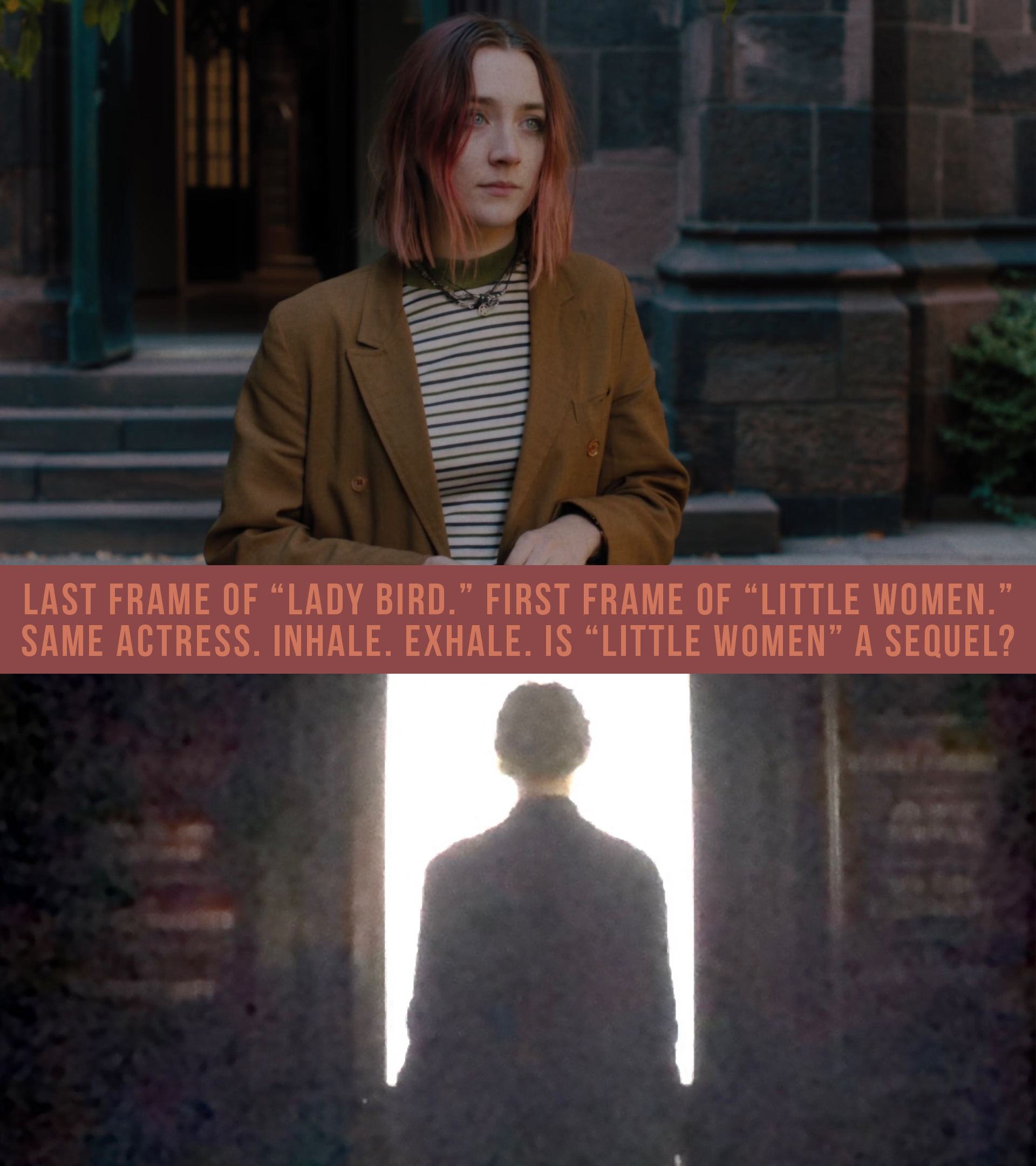
HULLFISH: The first time I saw Saoirse — and I was so impressed by her — was Brooklyn.
HOUY: Oh, yeah, she’s amazing. She is Meryl Streep. She’s that good.
HULLFISH: There’s a shot of her that holds for like 90 seconds on her face with no dialog and you see the emotions play over her face. You see everything you need with no words.
HOUY: Yeah, she’s got that. It’s really something. It’s really all you could ask for when you’re sitting there channeling that — watching the dailies and you see those moments where her face just becomes translucent. You can see right into her emotions. It’s just amazing. She’s got it.
HULLFISH: Does it cause problems for you as an editor because the performance is so amazing that you just want to hold on everything forever.?
HOUY: Well, I think we do that a lot. It’s because it’s a bounty of riches, as you said, but it’s just finding the very best moment and using it as impactfully as possible.
HULLFISH: I don’t know if I’d ever find a moment that I wanted to cut away from her.
HOUY: You have to know when to cut her for sure.
HULLFISH: Any scenes or moments that were particularly challenging or that you’re really proud of?
HOUY: We were working tirelessly on the Beth death sequence and really trying to get that perfect. We worked on it a lot. That was one of the areas we worked on the most. Our sound mixer said, “They should teach this whole reel — reel five — in film class. You guys nailed it.” And it was a mixer that I very much respected. We worked so hard on it, and I did feel very proud of it.
There’s a beautiful transition that we found in the cutting room that I was very proud of — that Greta sort of subconsciously shot — which was when Florence, who plays Amy, is at Aunt March’s house and she’s sitting by the fire on the ground, and Aunt March — Meryl Streep — is saying, “You’re your family’s only hope now. All the other girls are not marrying rich. You have to marry a wealthy man.” Then she says, “Go back to your little painting,” and Amy walks in a semicircle in this medium wide shot into the door, and we ended up putting the scene of her then being in the present day in Paris with Aunt March right up against that scene. And she walks through the doorway into the present as older Amy.

HULLFISH: I remember that!
HOUY: And it completed this perfect arch. You do remember?
HULLFISH: Yeah.
HOUY: That’s one of those moments where the movie — subconsciously — was emotionally tying itself, visually tying itself together. So just finding those moments and knowing that the movie was screaming out for them and making it happen. I felt like it was really unique.
HULLFISH: Is there something else you wish I’d ask about?
HOUY: I could talk about this movie and working with Greta for days. It’s what I always wanted to do as an editor — a movie like this and the things that we’ve done together, so I’m just very happy to talk about it at any length.
I love your podcast, by the way. I love it so much and your book and everything, so I’m tickled to be able to talk to you as well.
HULLFISH: Oh, thank you very much. I do want to talk about one other scene — just give you an opportunity to chat about cutting performance. There was a great scene where I really felt the energy — when Jo is turning down Laurie’s proposal. They’re out in a field and he’s just desperate for her to agree to marry him and she won’t do it. There’s just great energy. The choices to be on different sizes of shots and different performances or reactions. Can you talk to me about constructing that whole scene?

HOUY: That’s one that I feel very proud of. Greta is always generous to say to people that I just cut that while she was shooting and she didn’t change it afterward. That was exactly the scene — my first assembly is what you see in the movie theater.
HULLFISH: Wow.
HOUY: Yeah. But that was because it was such a great scene and I just worked really hard on it. I knew it would be great. I knew it was the crown jewel of the movie. There are so many in this movie.
I also really felt for Laurie there. His love needed to mature and grow, and in that scene, he’s still clinging to something that he knows deep down isn’t gonna work. He loves Jo, but he’s got it confused. So I really felt for him and, of course, for Jo in that scene. So I really felt like I understood it, and it was so beautifully shot. The performances were all really good, but there were certain takes where it was just out of control and I just had to use them.
It was like feverish — throwing it together and putting it out there, and then we didn’t touch it because we knew it was just right.
HULLFISH: That’s one of those places where when I’m editing I get physically and emotionally caught up. Your breathing starts to increase and you can’t sem to move fast enough to get it together.
One final thing that I wanted to mention. Near the end of the film, Jo concedes to her mom that she’d marry Laurie if he asked her again. Shortly after that, it’s revealed that Laurie has married Jo’s sister instead. When she finds out, there’s a great shot where I think the audience wants someone else to acknowledge the loss to Jo and there’s a great cut to a reaction of Laura Dern’s character — as Jo’s mom — as the two sisters hug and you cut to the mom just to give a little nod that the mom knows how much Jo is hurting at that moment.
HOUY: And that’s a good example of tone because we tried a few different cutaways and there was just that one moment there that was just right for that. And you got it just right. Laura nailed that moment. We worked really hard to get that look to say exactly what comes across there. So I’m glad that it did for you.

HULLFISH: Was it that some of Laura’s performances were too obvious or on-the-nose?
HOUY: Well, it’s easy to do. That’s why she’s a great actress because she honed in and found that exact moment, but getting to it is tricky because it is literally just a look. You can go a little bit too knowing or too sad for her or too happy. It’s sort of alchemy. You have to just try a few different ways of doing it until you get it right. We found it pretty early on, but we were very happy that we got it just right.
Laura gave it to us. We just had to find it.
HULLFISH: I loved this conversation with you. As you pointed out, I could talk about this for hours and hours. I’m going to leave it there — on that wonderful note about tone and performance. Nick, thank you so much for talking to me today.
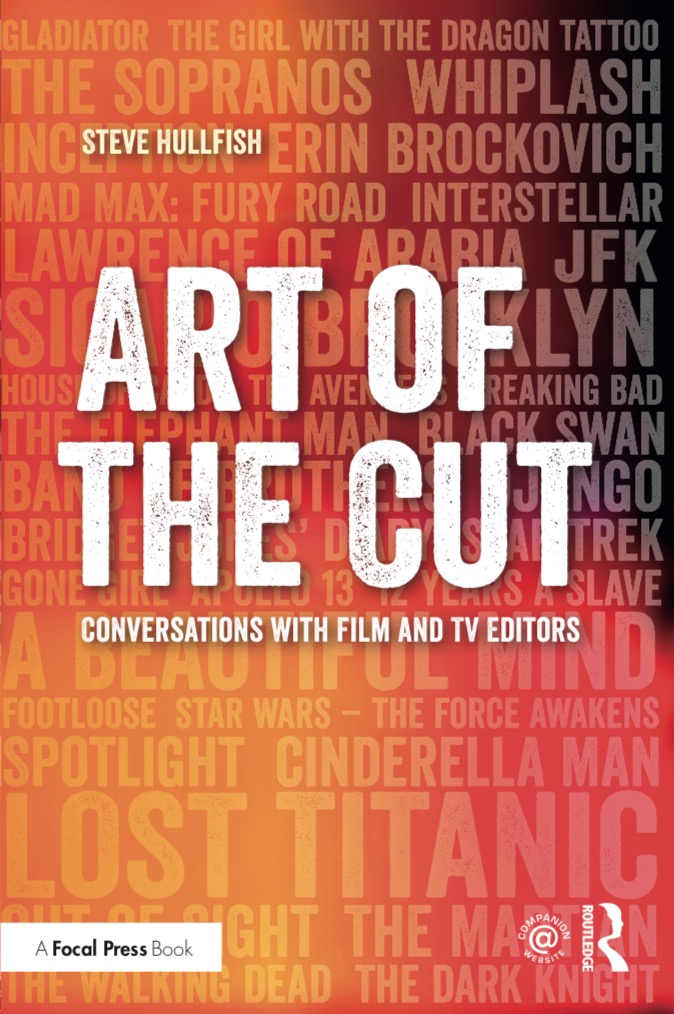
HOUY: Thank you so much. I really appreciate it.
To read more interviews in the Art of the Cut series, check out THIS LINK and follow me on Twitter @stevehullfish or Instagram or on imdb.
The first 50 interviews in the series provided the material for the book, “Art of the Cut: Conversations with Film and TV Editors.” This is a unique book that breaks down interviews with many of the world’s best editors and organizes it into a virtual roundtable discussion centering on the topics editors care about. It is a powerful tool for experienced and aspiring editors alike. Cinemontage and CinemaEditor magazine both gave it rave reviews. No other book provides the breadth of opinion and experience. Combined, the editors featured in the book have edited for over 1,000 years on many of the most iconic, critically acclaimed and biggest box office hits in the history of cinema.

Filmtools
Filmmakers go-to destination for pre-production, production & post production equipment!
Shop Now